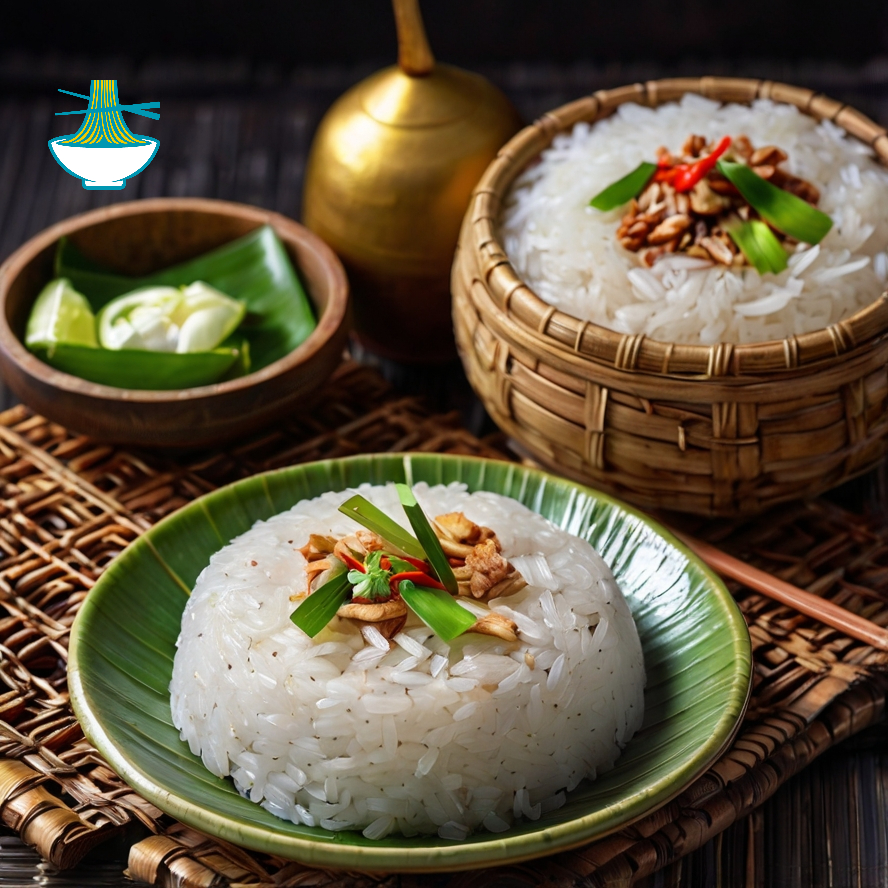Discover the traditional taste of Laos with our Sticky Rice (Khao Niew) recipe. This beloved staple of Lao cuisine is perfect for pairing with meats, vegetables, and flavorful sauces. Easy to make and irresistibly delicious, Khao Niew is a must-try dish for any food enthusiast.
Ingredients:
- 2 cups sticky rice (glutinous rice)
- Water (for soaking and steaming)
- Banana leaves or a clean kitchen towel (for steaming)
Instructions:
Rinse and Soak:
- Place the sticky rice in a large bowl and rinse under cold water until the water runs clear. Drain.
- Add enough water to cover the rice and let it soak for at least 4 hours or overnight.
Prepare for Steaming:
- Drain the soaked rice. Line a steamer basket with banana leaves or a clean kitchen towel to prevent sticking. If using banana leaves, cut them to fit the steamer and lightly oil them to avoid sticking.
Steam the Rice:
- Spread the soaked rice evenly in the steamer basket.
- Cover and steam over boiling water for about 30-40 minutes, or until the rice is tender and translucent. You may need to add more water to the steamer if it runs low.
Serve:
- Once cooked, remove the rice from the steamer and let it cool slightly. Serve warm with your favorite Lao dishes such as grilled meats, vegetables, or spicy sauces.
Notes:
- Sticky rice is traditionally eaten with your hands, using it to scoop up meat and vegetables.
- For an added touch, you can mix a little coconut milk with the rice before steaming for extra flavor.
Enjoy this delicious and authentic Sticky Rice as part of a delightful Lao meal!
Nutritional Values:
Sticky Rice (Glutinous Rice):
- Calories: 97 kcal
- Carbohydrates: 21.3 g
- Protein: 1.3 g
- Fat: 0.2 g
- Fiber: 0.6 g
Benefits:
- Energy Boost: High in carbohydrates, sticky rice provides a quick source of energy.
- Digestive Health: While low in fiber, it is easy on the digestive system and can be a good option for those with digestive issues.
- Versatility: Sticky rice is a good base for various dishes, complementing proteins and vegetables.
Banana Leaves:
- Calories: 35 kcal
- Carbohydrates: 8 g
- Protein: 2 g
- Fat: 0.1 g
Benefits:
- Antioxidants: Rich in antioxidants, banana leaves help in neutralizing free radicals.
- Anti-inflammatory Properties: They have compounds that may reduce inflammation.
- Nutrient-Rich: They contain essential vitamins and minerals such as vitamin C, vitamin A, and potassium, though they are typically not consumed directly but used for cooking.
Note: Banana leaves are used primarily for their flavoring and cooking properties rather than for direct consumption.
Water:
- Calories: 0 kcal
- Carbohydrates: 0 g
- Protein: 0 g
- Fat: 0 g
Benefits:
- Hydration: Essential for maintaining hydration and overall bodily functions.
- Cooking Medium: Helps in cooking and steaming, making ingredients tender and flavorful.
These ingredients together create a nutritious and versatile base for many dishes, especially in Lao cuisine.


Comments